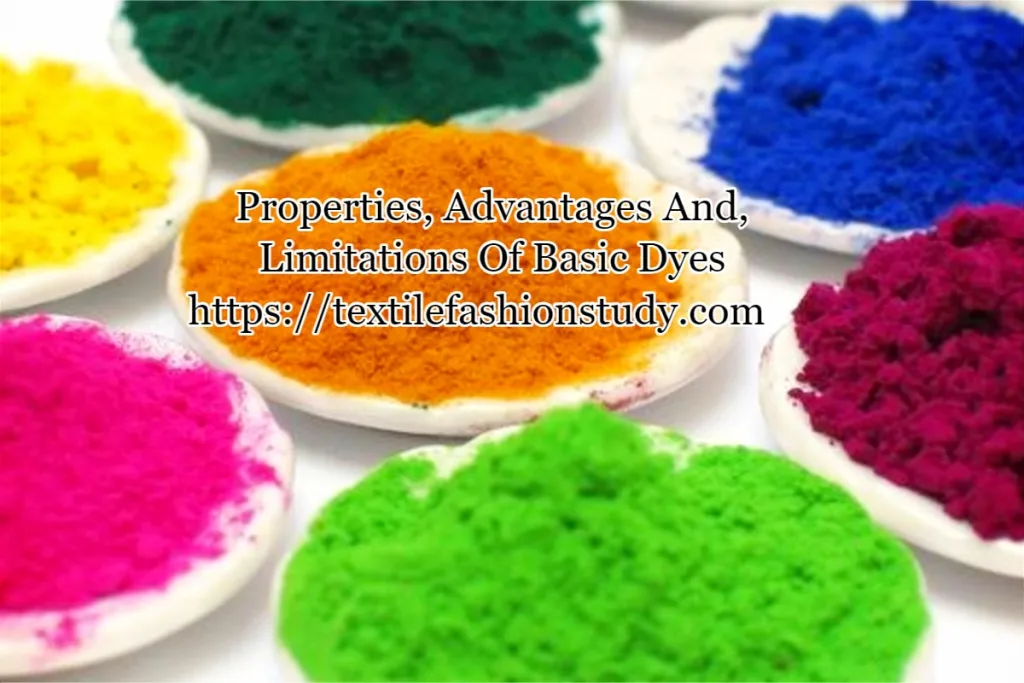Table of Contents
Basic Dyes
Basic dyes and their application in the dyeing and printing processes are interesting. Jute fiber and its generated products are treated with basic dyes. I have written about jute fabric printing with basic dyes in one of my blog posts. I think that’s will help you to know about the printing process of basic dyes.
Basic dyes are called cationic dyes because when salts of organic bases are ionized into anionic and cationic parts, the time cation is responsible for color production. On the other hand, basic dyes are basically hydrochlorides or salts of organic bases. Generally, they are insoluble in water, but they become insoluble when treated with alcohol or methylated spirits. Basic dyeing is carried out in an acidic form. The dyeing process for different fibers is varied.

Properties of Basic Dyes
Like other dyes; basic dyes have some own characteristics. Followings are the main characteristics of basic dyes:
- Basic dye is a synthetic class dye.
- Cationic part of the salt is responsible for color production.
- Basic dyes are water insoluble but soluble in alcohol and methylated spirit.
- This dyes are hydro-chlorides or salts of organic salts.
- Basic dyes apply in acidic condition.
- Very brilliant shade produce by basic dyes.
- Fastness properties of these dyes are average to good.
- Mainly, basic dyes are suitable for jute dyeing and jute printing, but wool and acrylic fibers can also be dyed with basic dyes.
- Leveling properties of these dyes are very poor.
- Cotton has no affinity for basic dyes but dyeing of cotton could be carried out by mordanting, fixing and dyeing operation.
- Basic dyes are comparatively cheap in price.
Advantages of Basic Dyes
The following are the advantages of basic dyes. They are-
- Firstly, it has moderate substantivity.
- Secondly, it is relatively economical than other dyes.
- Thirdly, basic dyes has high Tinctorial strength.
- It has also wide shade range.
- After that, it includes some of the most brilliant man-made dyes.
- Lastly, basic dyes show good brightness
Limitations of Basic Dyes
The basic dyes have some limitations. The following are the disadvantages or limitations of basic dyes. They are-
- Firstly, it has high acid content.
- Secondly, it produce backwaters color.
- Thirdly, basic dyes shade stability is Poor.
- It has also very poor lightfastness
- Lastly, it use for preferential dyeing
In sum, we know that reactive dyes, azoic dyes are used for dyeing cellulosic fiber, but basic dyes also apply for this.
So, do your job and dye and print your product with basic dyes.






5 comments
Bhavin
Vat day is a mostly user in food instructions
Pankaj yadav
Dyein department only
Iqbal GHONIA
Dear sir,
Good information about Basic Dyes dyeing application.Please write me or send me Basic dyes Printing application
Noman Akanda
Is very good
spchemtech1
The one limitation of basic dyes is that it Cannot be used to dye cotton fabric but used for printing on cotton fabric by mordanting, fixing and dying process.